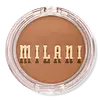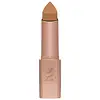What's inside
What's inside
 Key Ingredients
Key Ingredients

 Benefits
Benefits

 Concerns
Concerns

 Ingredients Side-by-side
Ingredients Side-by-side

Dimethicone
EmollientPhenyl Trimethicone
Skin ConditioningSilica
AbrasiveBis-Diglyceryl Polyacyladipate-2
EmollientIsononyl Isononanoate
EmollientMica
Cosmetic ColorantCalcium Sodium Borosilicate
Microcrystalline Wax
Emulsion StabilisingSynthetic Wax
AbrasiveCaprylic/Capric Triglyceride
MaskingSynthetic Fluorphlogopite
Octyldodecanol
EmollientSorbitan Olivate
EmulsifyingCitrullus Lanatus Seed Oil
EmollientRosa Damascena Flower Oil
MaskingTocopheryl Acetate
AntioxidantPunica Granatum Seed Oil
EmollientStearalkonium Hectorite
Gel FormingPropylene Carbonate
SolventPolyglyceryl-6 Polyricinoleate
EmulsifyingCetyl PEG/PPG-10/1 Dimethicone
EmulsifyingPentaerythrityl Tetra-Di-T-Butyl Hydroxyhydrocinnamate
AntioxidantSorbitan Isostearate
Emulsifying1,2-Hexanediol
Skin ConditioningDisteardimonium Hectorite
StabilisingCaprylyl Glycol
EmollientEthylhexylglycerin
Skin ConditioningTriethoxycaprylylsilane
Aluminum Hydroxide
EmollientCI 77891
Cosmetic ColorantCI 77492
Cosmetic ColorantCI 77491
Cosmetic ColorantCI 77499
Cosmetic ColorantDimethicone, Phenyl Trimethicone, Silica, Bis-Diglyceryl Polyacyladipate-2, Isononyl Isononanoate, Mica, Calcium Sodium Borosilicate, Microcrystalline Wax, Synthetic Wax, Caprylic/Capric Triglyceride, Synthetic Fluorphlogopite, Octyldodecanol, Sorbitan Olivate, Citrullus Lanatus Seed Oil, Rosa Damascena Flower Oil, Tocopheryl Acetate, Punica Granatum Seed Oil, Stearalkonium Hectorite, Propylene Carbonate, Polyglyceryl-6 Polyricinoleate, Cetyl PEG/PPG-10/1 Dimethicone, Pentaerythrityl Tetra-Di-T-Butyl Hydroxyhydrocinnamate, Sorbitan Isostearate, 1,2-Hexanediol, Disteardimonium Hectorite, Caprylyl Glycol, Ethylhexylglycerin, Triethoxycaprylylsilane, Aluminum Hydroxide, CI 77891, CI 77492, CI 77491, CI 77499
Ethylhexyl Palmitate
EmollientIsononyl Isononanoate
EmollientDiisostearyl Malate
EmollientSynthetic Wax
AbrasiveCeresin
Emulsion StabilisingPolyisobutene
Silica
AbrasivePhenoxyethanol
PreservativeTocopheryl Acetate
AntioxidantCaprylic/Capric Triglyceride
MaskingCamellia Sinensis Leaf Extract
AntimicrobialCarthamus Tinctorius Seed Oil
MaskingCitrus Medica Vulgaris Fruit Extract
AntioxidantTrihydroxystearin
Skin ConditioningSodium Hyaluronate
HumectantGlucomannan
Skin ConditioningRosa Rubiginosa Seed Oil
EmollientIron Oxides
CI 77492
Cosmetic ColorantCI 77891
Cosmetic ColorantCI 77499
Cosmetic ColorantEthylhexyl Palmitate, Isononyl Isononanoate, Diisostearyl Malate, Synthetic Wax, Ceresin, Polyisobutene, Silica, Phenoxyethanol, Tocopheryl Acetate, Caprylic/Capric Triglyceride, Camellia Sinensis Leaf Extract, Carthamus Tinctorius Seed Oil, Citrus Medica Vulgaris Fruit Extract, Trihydroxystearin, Sodium Hyaluronate, Glucomannan, Rosa Rubiginosa Seed Oil, Iron Oxides, CI 77492, CI 77891, CI 77499
Ingredients Explained
These ingredients are found in both products.
Ingredients higher up in an ingredient list are typically present in a larger amount.
This ingredient is an emollient, solvent, and texture enhancer. It is considered a skin-softener by helping the skin prevent moisture loss.
It helps thicken a product's formula and makes it easier to spread by dissolving clumping compounds.
Caprylic Triglyceride is made by combining glycerin with coconut oil, forming a clear liquid.
While there is an assumption Caprylic Triglyceride can clog pores due to it being derived from coconut oil, there is no research supporting this.
Learn more about Caprylic/Capric TriglycerideCi 77492 is also hydrated iron III oxide. It's sole purpose is to give a yellow hue to products.
Iron III oxides are classified as inorganic chemicals for coloring.
Synthetically created Ci 77492 is considered safer than those naturally found. This is because the synthetically created version may contain less impurities. Iron oxides are generally non-toxic and non-allergenic.
Learn more about CI 77492Ci 77499 is also hydrated iron III oxide. It is created from mixing red and black iron oxides. This helps give shades of darkness to a product.
Iron III oxides are classified as inorganic chemicals for coloring.
Ci 77891 is a white pigment from Titanium dioxide. It is naturally found in minerals such as rutile and ilmenite.
It's main function is to add a white color to cosmetics. It can also be mixed with other colors to create different shades.
Ci 77891 is commonly found in sunscreens due to its ability to block UV rays.
Learn more about CI 77891Isononyl Isononanoate is a synthetic skin-conditioner and texture enhancer. It is created from nonanoic acid, a fatty acid found in cocoa and lavender oil.
As an emollient, Isononyl Isononanoate helps keep your skin soft and smooth. This is because emollients create a barrier on the skin to trap moisture in.
Isononyl Isononanoate helps give products a velvet feel and improves spreadability.
Learn more about Isononyl IsononanoateSilica, also known as silicon dioxide, is a naturally occurring mineral. It is used as a fine, spherical, and porous powder in cosmetics.
Though it has exfoliant properties, the function of silica varies depending on the product.
The unique structure of silica enhances the spreadability and adds smoothness, making it a great texture enhancer.
It is also used as an active carrier, emulsifier, and mattifier due to its ability to absorb excess oil.
In some products, tiny microneedles called spicules are made from silica or hydrolyzed sponge. When you rub them in, they lightly polish away dead skin layers and enhance the penetration of active ingredients.
Learn more about SilicaSynthetic Wax is created from fossil fuels such as natural gas. It is used to enhance texture, adjust pH, and as an occlusive.
It may also be used as an abrasive ingredient to exfoliate the skin.
Synthetic Wax may not be fungal acne safe.
Learn more about Synthetic WaxTocopheryl Acetate is AKA Vitamin E. It is an antioxidant and protects your skin from free radicals. Free radicals damage the skin by breaking down collagen.
One study found using Tocopheryl Acetate with Vitamin C decreased the number of sunburned cells.
Tocopheryl Acetate is commonly found in both skincare and dietary supplements.
Learn more about Tocopheryl Acetate